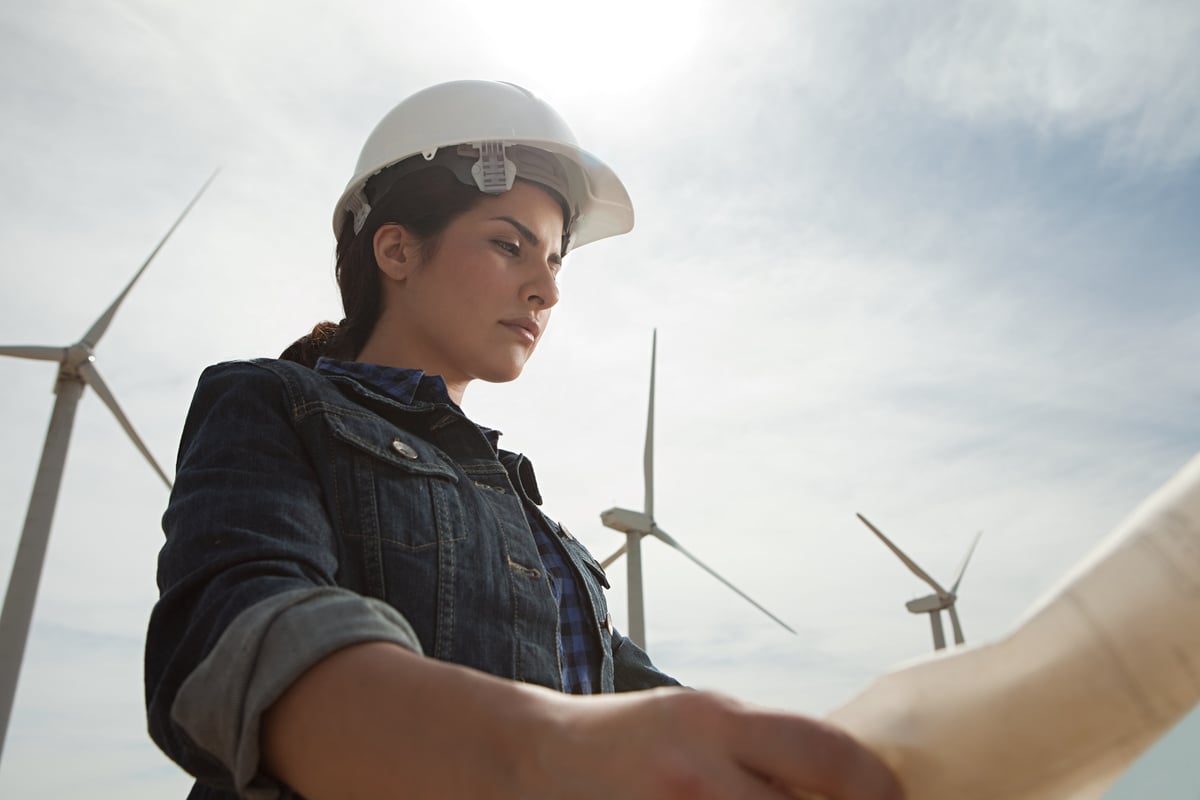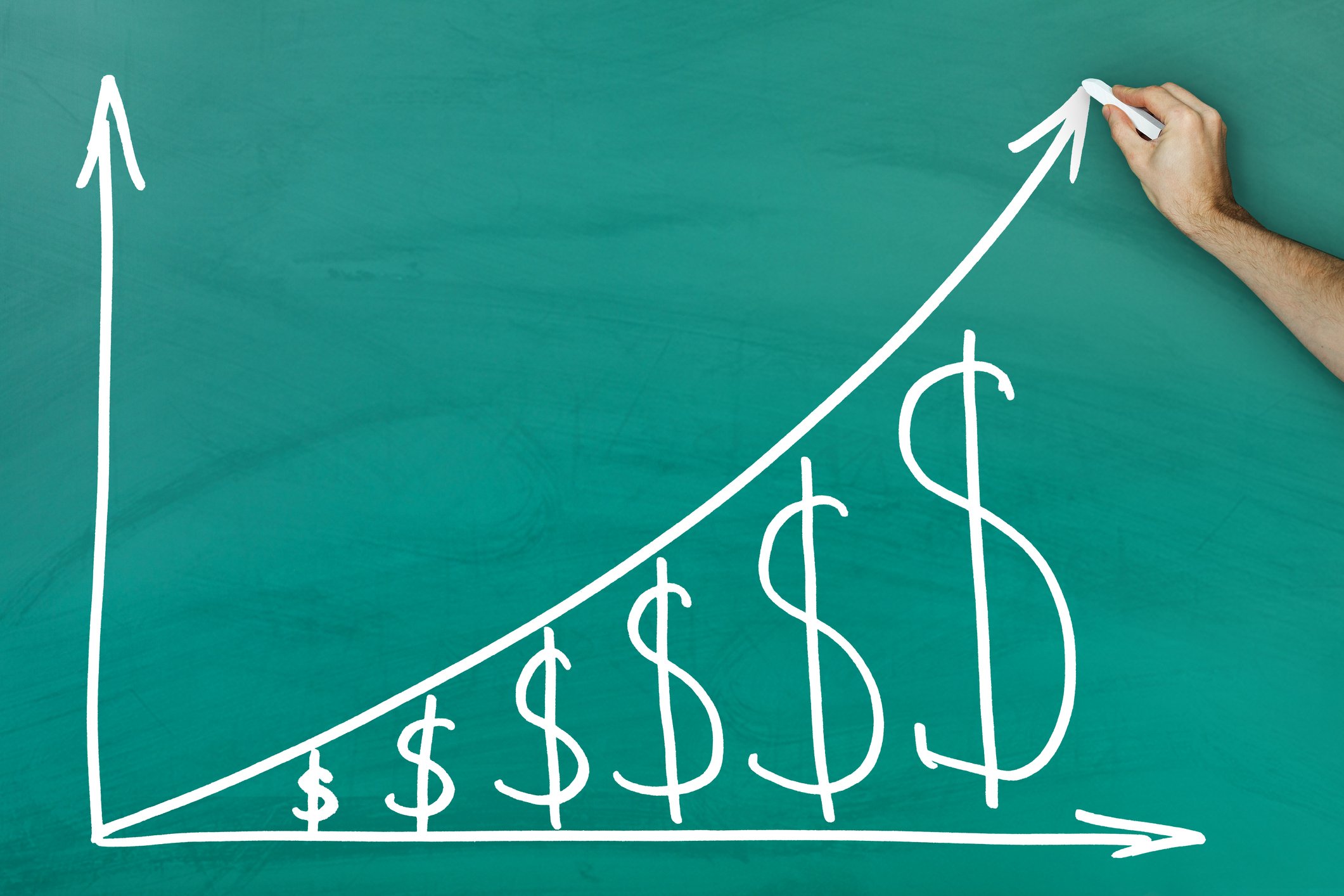If your portfolio doesn't have any exposure to renewable energy, then you may want to start thinking of that as a shortcoming. Why?
The United States sourced at least 15% of its electricity from hydroelectric dams, wind farms, and solar arrays in 2018. The growing trend will become undeniable in the next decade. This year, wind power will topple hydropower as the nation's leading renewable energy source -- a title that had been held for over 100 years. Meanwhile, battery prices are falling at such a precipitous rate, many projections call for solar energy to eventually eclipse both of its renewable peers. In fact, the U.S. Department of Energy thinks that could happen sometime around 2030, when the country is expected to lean on wind and solar alone for as much as 30% of its electricity.
Then again, most long-term projections have proven to underestimate the growth of wind and solar. The point is that growth-minded investors may want to begin searching for profitable businesses in renewable energy to own for the long haul. NextEra Energy Partners (NEP 1.55%) and Brookfield Renewable Partners (BEP 0.26%) are good places to start, especially considering both stocks are being disrespected by Wall Street at the moment.

Image source: Getty Images.
Benefiting from a huge injection of growth assets
NextEra Energy Partners is the renewable energy yieldco of NextEra Energy, the world's largest publicly traded utility ranked by market cap. That gives the partnership a sizable advantage over peers, especially when factoring in the close relationship with NextEra Energy Resources, the parent's power generation and services company.
Essentially, it means NextEra Energy Partners has strategic access to the country's largest renewable energy project backlog, which will hit 40,000 megawatts by 2020. Investors recently realized the value of that relationship. The partnership acquired 1,400 megawatts of wind and solar assets from NextEra Energy Resources to increase its total portfolio to 4,100 megawatts of wind and 600 megawatts of solar. The transaction closed in December 2018.
The acquisition will have an immediate impact on adjusted EBITDA and cash available for distribution (CAFD), especially when combined with growth plans for the year ahead.
|
Period |
Adjusted EBITDA |
CAFD |
|---|---|---|
|
Full-year 2018 |
$886 million |
$339 million |
|
Expected annual run rate on last day of 2018 |
$1 billion to $1.15 billion |
$360 million to $400 million |
|
Expected annual run rate on last day of 2019 |
$1.2 billion to $1.375 billion |
$410 million to $480 million |
Source: NextEra Energy Partners.
It's important to note that a potential bankruptcy filing from California utility PG&E could impact the business. Management noted that approximately 23% of the partnership's annual CAFD is exposed to the beleaguered utility. Of course, even in a worst-case scenario the company wouldn't lose 23% of its CAFD, it would just have to renegotiate the long-term contracts or find new buyers for the electricity. Nonetheless, it injects uncertainty into an otherwise steady and predictable business.
Assuming the risk is mitigated through a bankruptcy court order or intervention from the state government, NextEra Energy Partners expects to grow its distribution by 12% to 15% per year through 2023. That would grow the current distribution of $1.86 per share to $3.08 per share at the midpoint, equivalent to a yield of 7.5% at the current share price. When coupled with nationwide growth opportunities extended from NextEra Energy Resources and a bustling natural gas pipeline network in Texas, this figures to be one of the best renewable energy stocks of the next decade at least.
Check out the latest NextEra earnings call transcript.

Image source: Getty Images.
Diversifying away from hydro with wind and solar
Units of Brookfield Renewable Partners had a rough 2018, but the business turned in another solid year of operations. Wall Street seemed to worry a little too much about the company's exposure to hydropower assets, but investors with a long-term mind-set probably didn't flinch.
The renewable energy yieldco generates most of its funds from operations (FFO) from hydropower assets in North America and Brazil. Due to a record year of water runoff in 2017, year-over-year comparisons throughout 2018 looked relatively weak. In reality it was just nature beginning to return to its historical average. What's more, Brookfield Renewable Partners reaped the benefits of powering up and acquiring new wind, solar, and energy storage assets across its portfolio, which more than offset the year-over-year fluctuation in hydropower.
|
Metric |
2018 |
2017 |
YOY Difference |
|---|---|---|---|
|
Hydropower FFO |
$671 million |
$686 million |
($15 million) |
|
Wind FFO |
$160 million |
$105 million |
$55 million |
|
Solar FFO |
$72 million |
$2 million |
$70 million |
|
Storage and other FFO |
$31 million |
$19 million |
$12 million |
|
Total segment FFO |
$934 million |
$812 million |
$122 million |
Data source: Brookfield Renewable Partners. YOY = year over year.
Brookfield Renewable Partners plans to continue growing the share of wind, solar, and energy storage in its portfolio -- and then expects to put the resulting financial flexibility to good use. It plans to buy back approximately 5% of outstanding units in 2019, which could lift the stock price. It also plans to invest up to $700 million per year in growth initiatives, which would support its long-term targeted distribution growth of 5% to 9% per year.
Growth, income, and renewable energy
Investors with an eye on the long haul who are looking to inject growth, income, and a little renewable energy into their portfolios should find NextEra Energy Partners and Brookfield Renewable Partners attractive investments. Each business is financially secure and executing on an intelligent long-term growth vision. Each offers an above-average distribution yield. And each is a leader in the high-potential field of renewable energy.





